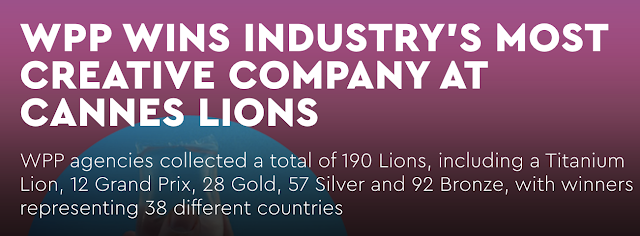In his great essay, "Politics and the English Language," George Orwell lays out "Six Rules for Writing." More than any other advice, I hand out Orwell.
He's a little like a sock in the jaw. But most writing needs a sock in the jaw. I've been telling people about this essay for three decades now. In that time, maybe five people have actually read it. No one, I believe, has pdf'd it and saved it on their desktop. I don't really understand why.
I've told whole agencies and whole creative departments to read it. I routinely pass it out to clients who ask me to help their in-house agencies. I still don't think anyone's read the essay. TL/DR. That stands for, I believe, terminally lazy, dumbness remains.
Orwell's sixth rule is the one I'm going to start with today. It says, "Break any of these rules (the previous five) sooner than say anything outright barbarous."
So many of the ads I see today are outright barbarous. Ugly looking, ugly sounding and ugly lying. Ugly to the point where they actually anger me. And make me hate the brands who besiege us with these ads. (I'm not sure clients or agencies understand this is how their ads are evaluated. People don't sit at home, see an ad and remark how it followed the brief. They don't notice, really, anything. Except once in a while something makes them smile. Much more often, when they notice at all, it's something that irks them.)
I have every privacy apparatus known to humankind on my Mac. I have IP-scramblers on my home network because 1.) they're inexpensive and 2.) I don't want to be followed around by brands like I'm a rare leopard being tracked by a great white hunter. Not only do I employ the ad-blocking equivalent of Hitler's Atlantic Wall, I use a special internet browser that is also configured to not turn me into commerce. Even when searching I avoid Google and use a privacy-attuned search-engine.
Nevertheless, like toxic effluvia leaking through supposedly hermetically sealed lead-lined crypts, ads still get through my defenses. As Neil Young sang so many years ago, "Rust Never Sleeps." Neither do surveillance capitalists.
Fortunately, to the right of these offending ads on LinkedIn, there are usually three tiny dots. Click on them and they allow you to "report" ads. And I often do.
What I wonder is this: How many creatives, how many account people, how many agencies and how many clients even know these three tiny dots exist? Because to my mind, like a cowboy in the Old West who always carried two six-shooters, most people know they're armed with these defenses. Those three dots lead to this menu.
Click on the grey flag, and you get to a screen that gives you these options:
When I see an ad like the one below, I report it in my head. Most often, it's so full of lies, half-truths, deceptions and bushwa that a large portion of my corpuscles grow dyspeptic.




No comments:
Post a Comment